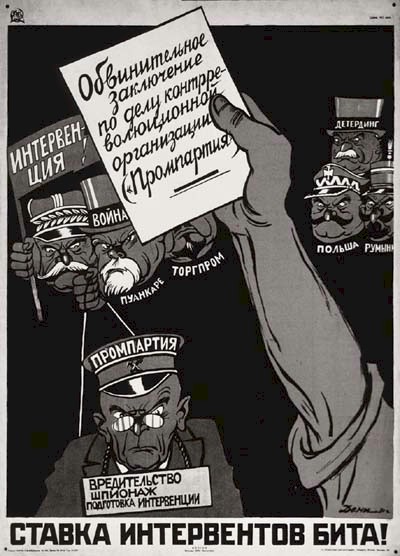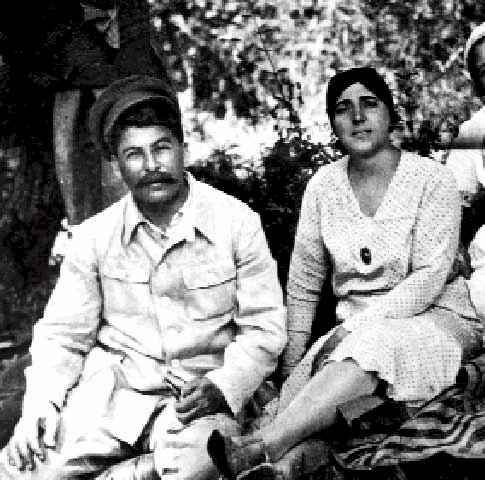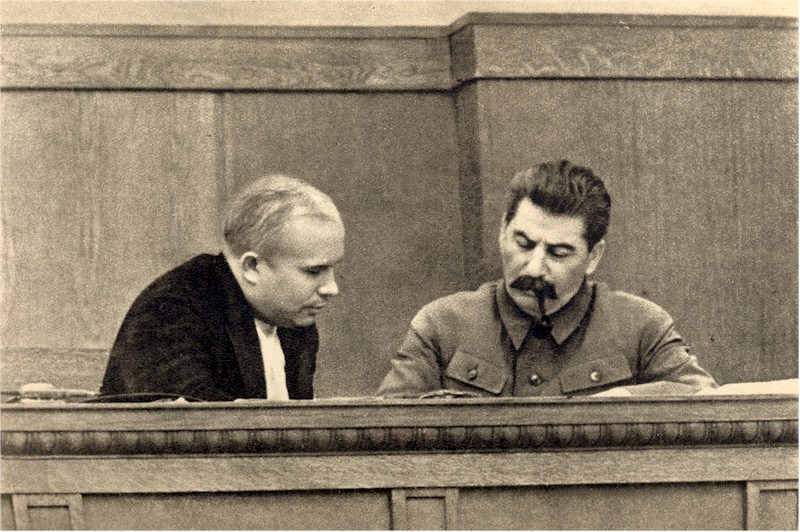Мы продолжаем напряженно работать, чтобы улучшить наш сайт и перевести его на другие языки. Русская версия этой страницы еще не совсем готова. Поэтому мы представляем здесь пока английскую версию. Мы благодарим вас за понимание.
Сталинская эпоха
1924
Vladimir Lenin died on January 21, 1924, the official cause of death being arteriosclerosis. On the morning of January 22, his body was mummified temporarily to be placed on a bier for several days in the Archway of the House of the Unions. But Joseph Stalin immediately showed that he counted as well: he wanted to prove that the bolsheviks could even overcome death. The Kremlin announced that Lenin's body would be preserved in a special mausoleum on the Red Square. And the name of Saint-Petersburg, the capital of the Romanovs, was changed into Leningrad.
End of January, a wooden mausoleum was set up. Behind closed doors many people were working to realise Stalin's plan. The anatomist Vladimir Vorobyov (1876-1937) and the young biochemic Boris Zbarsky (?-1952) mummified the body in such way that it could be preserved for a long time. When Zbarsky asked if the result of his work resembled to reality, Lenin's brother replied: «I can't say nothing, I'm just speechless. He looks like when I saw him just after his death.» And so Stalin offered a present to the first Congress without Lenin: he offered Lenin himself. Then he ordered the transformation of the wooden mausoleum to an impressive, monumental building, covered with dark red porphyry and black Labrador stones.

The Lenin Mausoleum
1926-1928
At the XVth Communist Party Congress in 1927, Leon Trotsky (1879-1940),Lev Borisovich Kamenev(1883-1936) and Grigory Yevseevich Zinoviev(1883-1936) were thrown out of the party and the New Economic Policy came to an end. Still in 1927, the jubilee year of the Cheka, dozens of engineers got arrested in the Donets basin, on suspicion of «sabotage». On May 20, 192,8 they were shown in Moscow - 53 engineers were brought up. It was an impressive show: all defendants chastised themselves plentifully. They seemed to want to compete with the public prosecutor on who could reveal the most serious accusations. The public prosecutor demanded death penalty against 23 defendants, but only 5 executions took place by way of thanks for their «good cooperation». Stalin ordered the labourers to search for saboteurs in all factories.
The first Five-Year Plan started on October 1, 1928. The emphasis was put on industrialization and collectivization of agriculture. The sovkhoz farms were presented as an example. A sovkhoz was a collective farm completely owned by the state. The machines were leased from leasing companies and the people working on the farms were on the payroll of the state. The word Совхоз was an abbreviation of Советское хозяйство [sovetskoe khozyaistvo] or soviet household.
On other collective farms, the kolkhoz farms, the farmers worked for a profit share, they were not working for the state nor someone else. The kolkhoz farms were property of groups of cooperating farmers, they had no guarantee for their income. The word колхоз was an abbreviation of the term коллективное хозяйство [kollektivnoe khozyaistvo] or collective household.
These independent farmers were called kulaks. Stalin started the forced collectivization of agriculture, and the «liquidation of the kulak class». The notion kulak appeared to be very flexible: millions of - often poor - farmers were deported to inhospitable places of the Soviet Union.
1929
Stalin urged the «collectivization without limits». The country was preparing its leader's 50th birthday, which was to be celebrated in December. He chose his own birthday as the ideal moment to start the Big Turn. Special freight trains, formerly used for the transportation of cattle, were now waiting for the transportation of people. Besides the kulaks, the old Russian villages had to be destroyed as well. The Revolution had offered land to the rural population. Now they had to return it, together with the cattle they had collected. Instead of «mine» they had to learn to say «ours» in the future. The kulaks, the farmers who had been doing relatively well until then, did not accept the new rules and were ready to resist. Therefore, Stalin decided to «solve» the problem in a revolutionary way by destroying them all. He appointed Vyacheslav Mikhailovich Molotov (1890-1986) as the head of the commission made responsible for it and Molotov did it in a diligent and bloody way.
In February, the kulaks were divided into groups. First, the so-called contra-revolutionary activists would be shot or sent to camps, and their families would be deported to the farthest corners of the country. After that, the most wealthy kulaks would be deported to far-away and unfruitful areas. They disappeared to the north, the Ural, Kazakhstan and Siberia. Nobody knew exactly who belonged to which category. The poor countrymen and the smallholders who escaped from deportation were united in collective state farms. The carefully kept livestock of the kulaks and their well kept farms were transferred into kolkhoz farms, together with all their other properties and savings.
April 1929 was the start of the biggest experiment of the 20th century, which would cause endless shedding of blood. In order to expose «saboteurs», Stalin would start using the secret police. It was also the start of the show trials. Right wing activists were put in the pillory all over the country, and found guilty in meetings organized in factories, training centers, kindergartens and even graveyards. From the beginning, the church was one of the targets of the bolshevik regime. Stalin demolished the churches literally, like Lenin wanted it. The climax of the campaign would be the destruction of the Cathedral of Christ the Saviour, Moscow's biggest church, in 1931. The churches which were not demolished were transformed into entrepots. School kids were ordered to take icons at school, in order to burn them in public. In exchange, they received posters with Lenin's image, to be put in place of the icons.
While the end of the decade was nearing, hordes of filthy and neglected people were wandering around and a great famine afflicted the country. Rural people had usurped the cities. The huge apartments of the rich became communal residences, in which lived ten or more families. The Catholic Pope Pius XI (1857-1939) incited the believers to pray for the persecuted christians in Russia. On the eve of the day on which this prayer would be announced worldwide, Stalin published a decree. He blamed the malicious overzealous party officials who had closed some churches contrary to the party rule. And, though the priests and the monks did not return from exile and 80 % of the country churches were still closed, the people reacted enthusiastically to the fact that on Stalin's orders a few churches had been re-opened. It successfully created a popular Russian character: «the good czar with the bad ministers» .
1930
In the summer of 1930, the intelligentsia were the next to be arrested by the secret police. In some scientific disciplines, 85% of the scientists was purged. Most were deported to Siberian or Asian labour camps or exiled. Some were executed by firing squads, or committed suicide when they were visited by the secret police. Many of them died in the Gulag.
A next show trial was organized, this time against so-called interventionists. The accused were members of the Industrial Party, mainly technically skilled intellectuals who were accused of preparing a push with the help of foreign governments.

Poster against the interventionists
1931-1932
At the beginning of the awful thirties, the avant-garde poet Vladimir Vladimirovich Mayakovsky (1893-1930) committed suicide by putting a bullit through his head. The avant-garde had wished a revolution in art, but the new regime wanted an art at the service of the revolution. Lenin had already created the Российская Ассоциация Пролетарских Писателей (RAPP) or the Russian Association of Proletarian Writers by which he wanted to counter the futurists. The RAPP was openly trying to put art under the control of the regime. When the association was abolished by Stalin in 1932 by decree, many writers were relieved, but the very same decree prohibited the existence of all other literary groupings. At the same time the Союз Советских Писателей [Soyuz Sovietskikh Pisateley] or the Union of Soviet Writers was created, presided by Maxim Gorky (1868-1936). As from 1934-1935, it would be almost impossible for non-members to get their works published.
In the winter of 1931-1932, the Ukraine, the Wolga area, the Caucasus and Kazakhstan were in the grip of the most important famine the country ever knew. Millions of starving people tried to take refuge in the cities, but there the bread was only supplied to inhabitants of the city having bread coupons. Nobody ever knew how many people died as a result of this famine. Estimations vary from 5 to 8 million. Stalin fought the famine with his usual weapon: terror. In August 1932, he drew up personally the notorious law stating that «individuals who misappropriate public funds must be considered as enemies of the people» and he proclamed cruel punishments for offenders of this law.
In January 1933, 55.000 people were already convicted following the new law, and 2.000 were shot. The extermination of the kulaks was carried on as well. The official statistics reported the deportation of another 240.000 families that year. In the winter of 1932-1933 there was famine again. Stalin's wife, Nadezhda Sergeevna Alliluyeva (1901-1932), had committed suicide. The population was starving, but they didn't dare to touch the grain of the kolkhoz farms and, despite the famine, the exportation of grain to the west didn't stop. Through fear, bloodshed and hunger, Stalin led a broken country on its way to industrialisation. On the last day of the year the first Five-Year Plan was officially declared «accomplished».

Stalin and Nadezhda
1934
The XVIIth Party Congress in January-February was called the Congress of the victors. The title of Secretary-General was changed into First Secretary. On September 18, the USSR joined the League of Nations and started promoting the idea of collective security. The country's armament was being increased. On December 1, Sergey Mironovich Kirov (1886-1934) was killed, probably with Stalin's knowledge. He was one of Stalin's friends and followers, and he had just purged the Leningrad party administration from anti-Stalin elements. But on the XVIIth Party Congress he was, against his own will, nominated as opposing candidate for Stalin by an anti-Stalin group and... he got many votes. Probably too much in Stalin's mind. The Big Terror started. Millions of people disappeared to the Gulag Archipelago
1935
In April 1935, a new law was proclaimed, by which children of twelve years and more could get the same punishments as adults, including death penalty. So Stalin's victims had to seriously take into account the situation of their descendants. The Moscow metro was opened; another sign of the «great future» for the people. The marvelous underground palaces were meant to show the labourers in what kind of houses their children would live under the communist rule.
1936
In the summer of 1936, the Great Purge was started. In December, Stalin proclaimed a new constitution by which were created, next to each other, the Supreme Soviet and the Soviet of Nationalities. The Communist Party became more powerful than ever before.
The Great Purge was typified by the infamous Moscow Show Trials, which were staged from 1936 to 1938, and during which numerous former allies of Stalin were eliminated one after another.
You can use the menu on the right to read more about the Show Trials.
Stalin started a sudden attack on culture. A «restructuring of the cultural front» was announced. It meant that art had to be comprehensive for the hard working mass. The remainings of the avant-garde art were destroyed.
1937
In 1937, when he was preparing himself to the deathblow to the old leninist guard, Stalin transformed the secret service NKVD into an enormous army, organised in divisions and with hundreds of thousands of officers and agents. A gigantic network of informants covered the entire country. At first sight they worked voluntarily, but they received regular rewards, like gradual promotions in their jobs. In 1937, Stalin stopped the ideological terror. The party officials in charge of the supervision of arts had done their work. The artistic intelligentsia was scared off and in 1937-1938 all the lives of all former leaders of the RAPP ended prematurely and almost simultaniously. Mikhail Bulgakov was left in peace though, and so were the novelist Mikhail Aleksandrovich Sholokhov (1905-1984) and composer Dmitri Dmtriyevich Shostakovich (1906-1975). Stalin also arranged that Boris Leonidovich Pasternak could not be arrested. Pasternak was the only one who dared to refuse to sign a petition for the execution of «the vermin, the saboteurs and the spies».
The functionaries responsible for the various economic sectors reported their successes, not in terms of financial figures, but in terms of the number of liquidated enemies. Besides the Party, the army was Stalin's most important concern and his main aim. While he had replaced Trotsky by Kliment Yefremovich Voroshilov (1881-1969) he had also fired all former commanders. He had continued the developments of the early thirties, and dismissed 37.000 men. But some commanding officers were untouchable. August Ivanovich Kork (1887-1937), the chief of the Military Academy, was the first to be arrested in May 1937. Marshal Mikhail Nikolaevich Tukhachevsky (1893-1937), a typical czarist officer, was arrested on May 27. On May 29, general Yeronim Petrovich Uborevich (1896-1937) was arrested in a railway station. Marshal Yona Emmanuilovich Yakir (1896-1937) was next. The Military Council had its meeting from June 1 to 4 at the People's Commissariat of War. More than 100 military commanders were called from the provinces because the forces were depleted by the large number of arrests: a quarter of the members was in jail. On June 11, an accelerated trial was organised with - obviously - death penalties as a result. The extermination of the old supreme command was continued in 1937 and 1938 and the army was weakened. But Stalin knew that the army would eventually come out of it stronger. The mass murder of the former officers meant that the command on the eve of the war could be handed over to younger, better trained commanders, to men for whom the civil war was nothing but a heroic myth.
As a real Caesar Stalin ensured distraction for his «happy» citizens. Above the Kremlin, for instance, were installed ruby stars and people went massively to the Red Square to watch how those stars were illuminated at night. The daily life was accompanied by thundering marching music, because this was the country of the victors. Monarchists, mensheviks, socialist-revolutionaries, the White Army… they were all defeated in the civil war and now the people could celebrate its victories in times of peace.
The Newspeak, like it was so well typified bythe British author George Orwell (1903-1950) in his novel 1948, came to a head. In a time span of two or three Five-Year Plans the Soviets had «caught up» with the rest of the world and soon they would leave them behind. From the Holy Russia, only the beheaded churches were left. Stalin had created a country of collectiveness. People worked collectively, lived collectively in communal apartments and the free time was spent collectively. Each profession had its own feast-day. Stalin made arise Parks of Culture and Rest in the whole country. In those parks, people could have fun under the guidance of trained recreation experts, collectively, of course. Individual responsibility was out of the question, only collective responsibility existed. The collective conscience allowed the people in 1938 to live «carefree»… while the Great Terror started its most cruel episode.
1938
It was time to create the image of the «nice Stalin». It started with the rehabilitation of innocently convicted people. He set 327.000 people free, among which many militaries. The airplane designers Andrei Nikolaevich Tupolev (1888-1972) and Nikolay Nikolaevich Polikarpov (1892-1944) and other prominent engineers and scientists were set free too. The terror, which originally focused on the Party changed its course. All of the sudden it was aimed against the masses. People were arrested for incautious judgments or for a misprint in the newspaper. The army made sure that that thousands of healthy, strong people were put in labour camps. Each arrest of an «enemy of the people» was followed by the arrests of his family members, friends and acquaintances. On August 25, 1938, when the Great Terror diminished, the Presidium of the Supreme Soviet discussed the possibility to prematurely set free the prisoners who had worked hard. But in 1939 Stalin made the Presidium sign a decree which stipulated that a convicted should stay in prison until the end of his entire punishment. On November 12, 1938, Stalin received a list of people who were arrested because of serious crimes. All 3.167 people had to be shot, on the orders of Stalin and Molotov.
Every once and a while Stalin crossed out a name on these horrible lists, like Boris Pasternak and Mikhail Sholokhov. They could be useful for the Party later. His signature is on 44 of such lists, meaning the execution of 44.000 people.
1939
The new Party that Stalin had created was officially presented. Half a million of new nominations had been made in the state and in the Party. At the higher levels, 293 out of 333 regional party leaders had been replaced. Ninety percent of the executive staff was less than 40 years old. Two important men had been promoted: the 43-years old Andrei Alexandrovich Zhdanov (1896-1948), son of a czarist school inspector and Kirov's successor in Leningrad, and the 45-years old Nikita Sergeevich Khrushchev (1894-1971), who had replaced Pavel Petrovich Postishev (1887-1939) in Ukraine. But the reliable Molotov remained the most important adjutant of Stalin.

Joseph Stalin and Nikita Khrushchev
Stalin openly started introducing more external characteristics of the former czar regime. The guests of a big party at the Bolshoi Theatre could see to their astonishment a group of cossack officers in the box. The amazement arose from the fact that they were wearing czarist uniforms, including gold and silver shoulder-knots. The year 1939 came to an end and Stalin's 60th birthday was nearing. It was common practice that he had planned a new theatre play at the Moscow Art Theatre MKhAT in honour of his own birthday. Mikhail Bulgakov, the bard of the White officers, had been asked to write the play. But alas, Bulgakov broke a taboo: he had asked to consult documents on the life of Koba (Stalin's pet name). the play was cancelled and this was more than Bulgakov could bear. Shortly after this he died.




